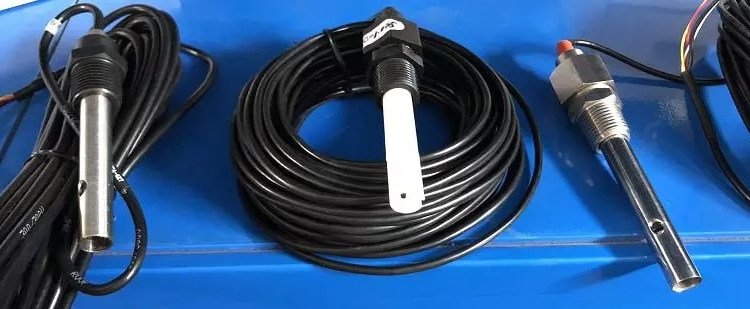Conductivity sensors play a key role in a variety of industries, maintaining process quality and efficiency by measuring the ability of a solution to conduct electricity. These sensors are critical for areas such as water treatment, chemical manufacturing and food production.
What is a conductivity sensor?
Conductivity sensors measure the conductivity in a solution, which indicates its ability to conduct electricity. This parameter is critical for a variety of industrial processes that need to monitor the concentration of ions in solution. Conductivity sensors are an indispensable tool for ensuring product quality, process efficiency and environmental compliance.
Principle of operation of conductivity sensors
Conductivity sensors operate by applying a voltage between two electrodes immersed in a solution. The current flow between the electrodes is proportional to the ionic concentration of the solution and is converted to a conductivity reading. There are several types of conductivity sensors, each designed for a specific application:
- Contact conductivity sensors: These sensors use electrodes that are in direct contact with the solution.
- Inductive ( ring ) conductivity sensors: These sensors use an electromagnetic field to measure conductivity without direct contact.
- In-line sensors: Designed for continuous monitoring within the process line(KDM EC Electrical Conductivity Sensor).
- Portable sensors: Handheld devices used for on-site measurements.

Conductivity is usually measured in micro Siemens per centimeter (µS/cm) or millisiemens per centimeter (mS/cm).
Industries that primarily use conductivity sensors
Water treatment: Conductivity sensors monitor water quality in drinking water and wastewater treatment plants to ensure compliance with health and environmental regulations.
Chemical manufacturing: They help maintain chemical concentrations in a variety of processes, ensuring product quality and safety.
Food and beverage: Conductivity sensors ensure the purity of water and other liquids used in food and beverage production, maintaining product quality and compliance with health standards.
Agriculture: They monitor soil salinity and nutrient levels, optimizing fertilizer applications and irrigation practices to improve crop yields.
Calibration and maintenance of conductivity sensors
- Proper calibration and maintenance of conductivity sensors is critical to obtaining accurate readings. Best practices include:
- Regular calibration: Perform routine calibration checks using standard solutions to ensure the accuracy of the sensor.
- Maintenance: Clean sensors regularly to prevent fouling and ensure consistent performance.
- Troubleshooting: Identify and resolve common problems, such as sensor drift or damage, to maintain reliable measurements.
Innovations in conductivity sensor technology
- Smart sensors: Integrate digital interfaces and wireless communications to enhance data collection and analysis.
- IoT integration: Connecting sensors to the Internet of Things for real-time monitoring and remote management.
- Enhanced materials: Develop sensors with higher durability and resistance to harsh conditions.
Summary
Conductivity sensors are an indispensable tool in a variety of industries, improving process efficiency and product quality by providing accurate conductivity measurements. As technology continues to advance, the range of applications and benefits of conductivity sensors will continue to expand, driving industries toward greater efficiency and sustainability.
For those seeking a comprehensive measurement solution, Apure offers more than just conductivity sensors. Our product range also includes sensors and instruments for other critical parameters such as level measurement instruments, temperature measurement instruments, flow measurement instruments and pressure measurement instruments. Choose Apure for reliability and expertise.
